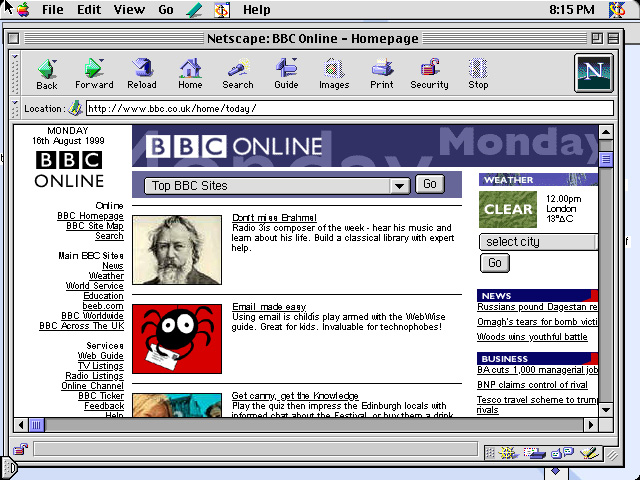Media Effects Research Lab - Research Archive
Are graphics helpful in comprehension of online news?
Student Researcher(s)
James Berry (B.A. Candidate);
Kristy McCarville (B.A. Candidate);
Michael Wilson (B.A. Candidate);
Sandra Wirth (B.A. Candidate);
Faculty Supervisor
INTRODUCTION
Online news sites are becoming increasingly popular and familiar since they benefit the reader by having no subscription costs, ease of access and indexing, among other advantages. It is also possible to use different technological features such as animated graphics to secure the attention of the reader. Since traditional newspapers do not have this advantage, it is felt that if animation does increase the comprehension and interest in news stories, then online news will increasingly gain audiences over traditional newspapers. This study examines the effects of animated graphics in online news stories on memory.
HYPOTHESES
Findings from previous studies led to the following hypotheses:
H1: Animated graphics will help maintain the interest of the subject, such that those participants who read an online news story with animated graphics will perceive the story to be significantly more interesting than those participants who read the same story without animated graphics.
According to the Elaboration Likelihood Model, the central route to attitude change occurs when a person has the ability or motivation to carefully scrutinize a message. However, when a person does not have the ability or motivation, or finds the message irrelevant, attitude change occurs via the peripheral route, as a result of some simple cues (such as attractive source, graphics, humor etc.) in the persuasion context. This leads to the following hypothesis:
H2: Participants will perceive the presence of animated graphics as peripheral cues when reading irrelevant stories, and will consequently rate the stories to be more enjoyable and interesting than subjects in the text-only condition.
METHOD
Thirty-two participants took part in a between-participants experiment. They were exposed to two online news stories that were designed to evoke neither strong positive or negative reactions. However, one of the stories was of great personal relevance while the other was designed to be irrelevant to typical college-aged students. Half the participants read the stories in text-only form while the other half read the same content with the presence of animated graphics. Both the experimental conditions were identical in content but differed slightly in terms of layout. After participants read the page, their memory for story content was measured by a battery of recall and recognition questions administered via a paper-and-pencil questionnaire.

RESULTS
H1: Not supported. The results indicate that comprehension was about the same for participants in both conditions.
H2: Not supported. The results indicate that participants in the animated graphics condition did not perceive the stories as being significantly more enjoyable and interesting than those participants in the text-only condition.
CONCLUSIONS
While the results indicate the presence of animated graphics have no effect on either comprehension or liking of online news content, future research should address other issues such as the combination of different types of modalities (such as text-only, text-audio, text-graphics etc.) as well as different types of news stories.
For more details regarding the study contact
Dr. S. Shyam Sundar by e-mail at sss12@psu.edu or by telephone at (814) 865-2173

